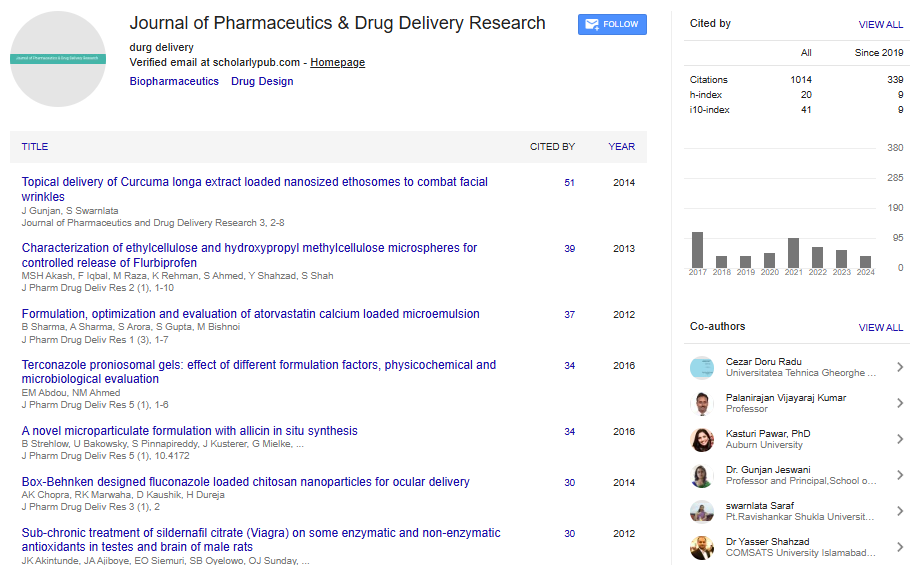Dual Chambered Syringe-Capa Valve
Kevin Abbott
Capa Valve Ltd, UK
: J Pharm Drug Deliv Res
Abstract
I njections are an effective way to administer medicines to patients. Injections can be used to administer high doses of medicines, and to achieve a rapid response. Injections are especially used in emergencies for severely ill patients. Because the medicine is injected directly into the blood stream, intravenous injections must be sterile, highly pure, clear solutions. Many injections must be dissolved in the correct fluid or diluted to the right strength. Because of those complexities, intravenous medicines are usually given only by health professionals, and often only in hospitals. Even with these controls, many mistakes are made annually that can put patients at harm. Some of these mistakes include: • Not preparing the injection aseptically, thus, creating the risk of infection, • Diluting the injection to the wrong strength or with the wrong fluid, • Giving the wrong dose, • Giving the correct dose too quickly or slowly, • Mixing two (or more) medicines that react with each other in a syringe in the hope of giving fewer injections, and • Missing a dose because it takes too long to prepare. The technology described in this presentation uses the patented Capavalve to separate a syringe into multiple chambers. This means that more than one medicine can be included in the same syringe without them interacting with each other, safely reducing the number of injections to be given. It also potentially provides for a drug solution or powder to be kept separate from the correct type and amount of diluting liquid within the syringe. Because the drug is diluted or dissolved within the syringe, the risks of introducing infections are reduced. The preparation of the medicine could then be achieved in the ward or by a patient at home rather than in a pharmacy. This would reduce the delays to a patient receiving his/her dose of medicine. Developing Capavalve could avoid many of the errors made when administering injections, removing risks to the safety of patients. It could also make it possible for patients to receive injections in their homes. The technology of working prototypes for dispensing two liquids sequentially in 10 ml and 20 ml standard syringes currently exists as a proof of the concept. However, with further miniaturisation of the current prototypes and by adapting the valve for reconstitution of solid medication, the technology could be applied to preâ€Âfilled syringe products. The valve itself is a simple two part device. The outer part seals against the inner bore of the syringe to separate the two liquids. When the syringe is plunged the valve moves down the syringe to dispense the first liquid. The central part seals against the outer part of the valve until the valve bottoms out, the pressure in the second liquid forces the valve to open and then the second liquid is dispensed. The testing of the Capavalve prototypes against the European Standard ISO11608â€Â3:2012 was undertaken at the University of Hertfordshire and the valve operation forces were below the break loose and glide values of force dictated in the standard. Some very rudimentary tests indicate that installing the valve to operate in the reverse direction could provide a syringe assembly which enables reconstitution of a powdered drug within a syringe. The use of the technology in a clinical setting will require buyâ€Âin from the clinical practitioners. But a change, even though beneficial, will always meet some resistance. Undertaking a full analysis of how the technology may provide benefits (time and cost savings) will help in its adoption. The simplicity of the design helps with the potential commercialization of the technology and the careful consideration of the design at this stage in terms of the cost of production of the valve itself will be a key aspect of its commercialization. A thorough understanding and demonstration of the costs to install the valve into a preâ€Âfilled syringe for administering drugs sequentially or reconstituting drugs compared to current practices will also be a key aspect of its commercialization.
 Spanish
Spanish  Chinese
Chinese  Russian
Russian  German
German  French
French  Japanese
Japanese  Portuguese
Portuguese  Hindi
Hindi 
